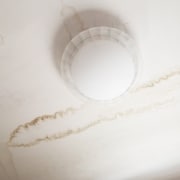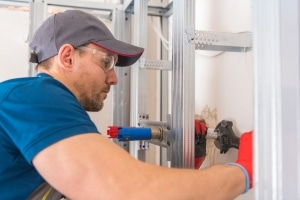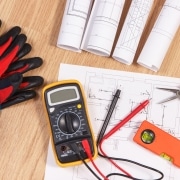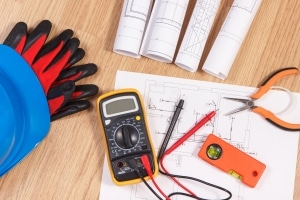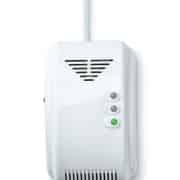How to Spot Water Damage in a House
Water damage is one of the most common home repairs we see as home inspectors. Especially in Florida, it usually starts on the exterior of the property. There are so many opportunities for water to get inside. Rain, humidity, and flooding is a constant threat to every flaw on your property, especially
- Roof
- Windows
- Doors
- Siding
- Chimney
- Foundation
But the risk of water damage is greatest around plumbing. One broken pipe can cost homeowners thousands of dollars to repair. Since water damage restoration isn’t cheap, many people cut corners by handling the job themselves. That spells trouble down the road when rotting wood and mold are hidden behind walls, floors, and ceilings.
When you are in the middle of the home buying process, you need a trained eye to identify signs of water intrusion. But how?
Well today, we are sharing a few ways that we spot water damage in a house. These are InterNACHI standards that Divinity Inspection Service upholds.
The Outdoor Inspection
Sometimes the best way to find water damage in a house is to determine entry points from the exterior of the property. A home inspector will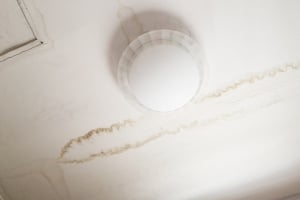
- Gaps or cracks
- Damaged building materials
- Roof age and integrity
- Bad or missing insulation
- Bad or missing flashing
- Nail pops
- Bent or missing gutters
- Poor drainage
The exterior surfaces of the property can tell you a lot about what is going on inside, behind walls, and under floors where it’s harder to detect water intrusion. If water can find a way inside, it will!
Ventilation Issues
All rooms with plumbing need to have working exhaust vents. Bathrooms, the laundry room, and the kitchen have manual fans that pull moisture through ductwork that leads outside. When performing household chores and tasks like bathing, washing, and cooking, you don’t want steam to build up.
It might not seem like a lot, but plenty of moisture accumulates from normal indoor activities. All of this vapor rises into our attic space.
If the roof is well ventilated, the moisture escapes. If not, the humidity in the air collects as water droplets on the surface of wood beams and insulation, which can lead to mold growth.
This is why inspecting the attic space is crucial to spot water damage in a house. If the roof ventilation system is not adequate, the building is at high risk for moisture problems. It’s also a good idea to check any exhaust vents to ensure that they are free from blockages and are working properly.
Measurable Evidence
When we perform a home inspection, we use an infrared camera and moisture meter to “see” behind surfaces that may be hiding pockets of moisture or even actively leaking pipes. The infrared camera can detect cold spots that could indicate water. The moisture meter will confirm if there is water present.
It’s important when investigating a home for water damage that you consider your physical restrictions and try to find ways around them. Early detection of water behind a wall or ceiling can be a tremendous help. The sooner you spot water damage in a house, the more money you save in restoration costs.
HVAC System
A home’s HVAC system has a lot of potential to cause water damage to your house. As the evaporator coils remove moisture from the air, it collects in a dish that leads outside through a small tube. If this water doesn’t make it outside due to a clog or break in the tubing, the water will spill out inside of the attic space or utility room floor.
Furthermore, if the HVAC system is old, oversized, or in need of repair, excess moisture can form on and around the unit and inside the ductwork. The HVAC system will require service or a dehumidifier will need to be installed to handle the high humidity levels present.
Clear Signs of Water Damage
Other obvious indications of water damage are relatively easy to detect. Watermarks or stains of any kind should be noted. Bubbling or peeling paint is often a sign of moisture problems in that area.
All water pipes and the surfaces around them should be carefully examined. Physically touching these locations to sense dampness is important.
Our sense of smell is also valuable in determining the presence of water. If a room or area has a musty odor, spend extra time in these places to find the source of the scent.
Do You Need a Home Inspection in Tampa, St. Petersburg, or Brooksville?
If you are concerned about the integrity of a current or prospective residential property, you should hire an expert who has the experience and knowledge to spot water damage in a house.
Divinity Inspection Services has highly trained inspectors with contracting experience. They don’t just know how to inspect a home, they understand how to build one correctly.
You will receive an extensive report that meticulously analyzes the property from top to bottom. And if you want a house checkup, we do those too!
Contact us today if you have any questions or schedule an appointment to get started.

